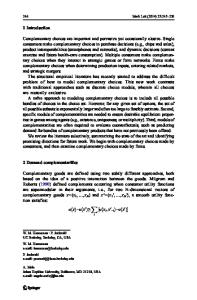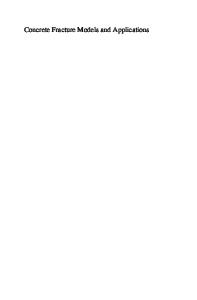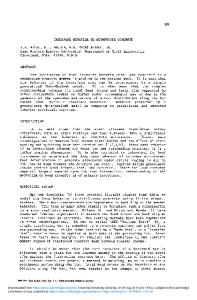Micromechanical Models of Structural Behavior of Concrete
- PDF / 578,560 Bytes
- 6 Pages / 612 x 792 pts (letter) Page_size
- 32 Downloads / 337 Views
Micromechanical Models of Structural Behavior of Concrete Ilya Avdeev1, Konstantin Sobolev2, Adil Amirjanov3, Andrew Hastert1 1
Department of Mechanical Engineering, University of Wisconsin-Milwaukee, WI 53211, U.S.A. Department of Civil Engineering, University of Wisconsin-Milwaukee, WI 53211, U.S.A. 3 Department of Computer Engineering, Near East University, Nicosia, TRNC, Mersin 10, TURKEY 2
ABSTRACT A three-dimensional numerical model capable of predicting structural behavior of concrete under various loading conditions is developed. Concrete, as a composite material, is represented by the mechanically strong aggregates of various shapes and sizes incorporated into a cement matrix. The most important aspect of concrete modeling involves an accurate representation of the spatial distribution of the aggregate particles. A micromechanical heterogeneous model based on prescribed spatial distribution of aggregates is developed. This model allows to compute the effective material properties of concrete using a representative cell homogenization approach. The results of numerical analysis of this model are compared to the models of particulate composite material. INTRODUCTION The macromechanical properties and behavior of particulate composite materials (strength, modulus of elasticity, creep, and shrinkage), such as portland cement and asphalt concrete mixtures, greatly depend on the properties of their main constituent: the aggregates [1]. In addition to material properties, the most important parameters that affect the macromechanical behavior include the packing density, compaction degree, and particle size distribution of aggregates. Better packing distributions improve the behavior of concrete [1, 2]. While there are currently several simple models that can predict the macro-mechanical properties of aggregate based composites, there is a need to create one that takes into account the size distribution and spacing of aggregate particles (Figure 1) [4, 6].
Fig. 1. Various simplified matrix/aggregate models for macro-mechanical behavior, [4,6]. The elastic modulus of the composite, Ec is based on these models summarized in Table I.
Table I. Simplified aggregate particle models
In these equations Vp is the volumetric proportion of particulate, Ep is the elastic modulus of the particulate, Vm is the volumetric proportion of the matrix, and Em is the elastic modulus of the matrix. Sobolev Random Particle Packing Algorithm Given the relationship between input parameters and output material performance, it is of great importance that the input parameters, including spacial distribution of aggregates, be highly tunable. The Sobolev packing algorithm is used to create a parametric aggregate dispersion for use in mechanical simulation (Figure 2) [1-3]. The packing size distribution is highly tunable and parametric-based which allows for future coupling of parameters and output values for modeling of real-scale particulate composites. The packing algorithm begins with the random generation of a center for the first lar
Data Loading...











